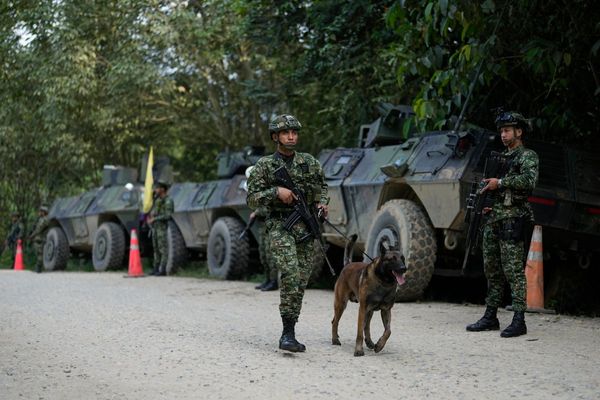
It’s still inconclusive who fired the missile that landed in Poland on Tuesday and killed two people, but it has not stopped world leaders, analysts, and self-proclaimed Twitter experts jumping the gun and hypothesising whodunnit.
“Sometimes they get an individual arms ID right, but the context is wrong — and that’s often where the harm lies,” arms and munitions intelligence specialist N R Jenzen-Jones told Crikey.
“There’s a lot of people out there just competent enough to be dangerous.”
The consequences of a quick-to-blame game in weapons identification can be deadly. This week NATO allies toyed with the prospect of an all-in conflict as leaders entertained the “unlikely” idea that the strike was an act of Russian aggression and the more likely scenario that it was the work of an awry Ukrainian air defence missile responding to a Russian provocation.
Both Russia and Ukraine have denied ownership of the missile. Putin ally and former Russian president Dmitry Medvedev said the West was angling for WWIII; US President Joe Biden drip-fed intelligence with talk of trajectories; NATO’s secretary general Jens Stoltenberg absolved Ukraine of wrongdoing even if the missile had a Ukrainian ID; and Polish President Andrzej Duda called for evidence-based calm.
Meanwhile, a thorough investigation into the incident is underway. Not only will it put a name to the missile, but it will establish cause and context. In short: who, how, why.
So what’s the proper process of ID-ing a weapon and bringing its backstory to life?
“Ultimately, when analysing a specific incident, the investigator is trying to draw a clear line between the guy who picked up the phone or radio and gave an order, and the harm that was inflicted at the other end,” Jenzen-Jones said.
There’s intel available both pre- and post-blast. Pre-blast gives the critical context (target location, military activity, and arsenal in the area), while post-blast provides physical evidence (damage to buildings, craters, casualties, and munition remnants on the ground and in humans).
“You’re asking questions about why someone would attack that site, whether or not what you are seeing is an intentional act, what the decision-making process might be,” he said.
So where to begin picking up the pieces?

Jenzen-Jones said you go big before you go small. First step is to select a “class” — a choice between small weapons, light weapons, heavy weapons, and munitions.
Within these four killer categories are “groups”. The investigators deploy a divide-and-conquer strategy based on the aesthetic of the arms. For what it’s worth, a “long gun” is separated (at a safe distance) from a “hand gun”.
Then comes “type”, which is a further fragmentation of parts according to function. The final phase of “classification” is “method of operation”, which is ultimately how a machine is managed by its master.
That’s the PID (positive ID) part. In order to get a UID (unique ID) on a weapon, “make and model” are key. This is the missile equivalent of a Ford Taurus. Batch, lot, and serial number combined with physical characteristics including tool marks, geometric patterns, stripes, and engravings are all tell-tale signs.
“When a make, model name, or other key information is written on the weapon it’s very easy,” said Jenzen-Jones, adding that it’s “very uncommon, but not unheard of” to find “sanitised” (de-identified) or counterfeit weapons.
Why? Manufacturers aren’t generally making products for the purposes of guerrilla warfare, resources are scarce in war so nations draw on whatever they have at their disposal, and there are sadly “few consequences if you do get caught”.
But more often, damage to the weapon upon impact renders it difficult to identify, deforming distinctive shapes and obliterating markings. And so it’s over to the field of forensics. Buried in the fine print are characteristics like choice of font and chemical composition of paint.
The process of identification in the Polish case should be “relatively easy”, said Jenzen-Jones, because it is a “single munition incident”. Often blast sites are bombarded with an array of arms, making it difficult to disaggregate what’s what and who’s who. Even more so when chemical weapons are involved.
But all of this is contingent on context. And for that, the full picture is key. It’s the difference, said Jenzen-Jones, between a “regrettable accident, a negligent mistake, or a deliberate attack”.







